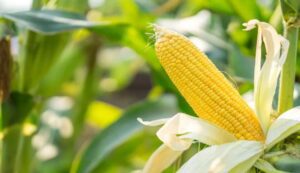Maize Cultivation: Sow this variety of corn in monsoon, you will earn a lot
Maize Cultivation: Sagar and other Bundelkhand farmers have begun getting ready for the Kharif season. When there is a little rain, maize will begin to be sown. However, just seeding is insufficient for excellent output. Its administration is equally crucial. For example, how should one go about sowing? How many seeds should there be? How far apart should the plants be placed? When and which nutrients should be administered to them? After the plants develop, what should be done? Farmers who are beginning to grow maize should learn from an agricultural professional what precautions to take.

According to Sagar Krishi Vigyan Kendra Bijora’s in-charge, Dr. Ashish Tripathi, there are now two kinds of seeds available. If you choose a hybrid variety in this case, seed treatment is included. Up to 5–6 kg may be sown per acre. The second, however, is a composite variety that Jabalpur Agricultural University has created. The Jawahar Maize 216, 215, and 218 varieties are available. Eight kg per acre may be used to plant these types.
There should be less space between plants
When planting, remember that a minimum of one foot should separate each plant; this will promote healthy development. Don’t seed too thickly since corn cobs also look attractive. Nutrient management must be considered both before and after planting while growing maize. We will be able to generate high agricultural yields as a result.
It is necessary to add these minerals
During the preparation of the field, 30 kg of uranium potash and three bags of single superphosphate are applied to each acre of soil. And urea is used as a top treatment when our crop is 20 to 25 days old after planting and again when it is 40 to 45 days old, or nano urea may be sprayed.
Pay attention to pests
The most crucial thing is to pay attention to the crop’s insect infestation once it is in the field. It is distinguished by the cutting of leaves and dirt around them, which indicates that it contains a caterpillar called Fall Armyworm FAW that consumes the leaves. First, maize becomes infested by insects. Then it goes on. Farmers need to monitor the pests.

